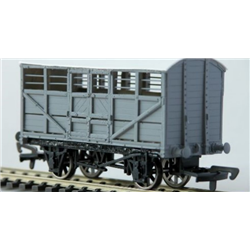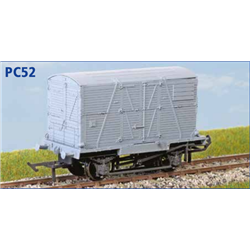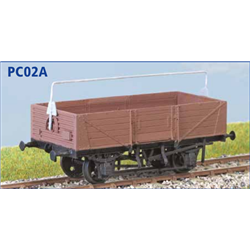There are a number of different options for attaching figures such as a horse and rider to a layout. Perhaps the...
No products
Product successfully added to your shopping cart
There are 0 items in your cart. There is 1 item in your cart.
Search Tips
How can I use BR wagon diagrams for my model railways?
You understand the importance of authenticity and detail in your models. British Railways (BR) wagon diagrams are an invaluable resource that can enhance your modelling projects by providing historical accuracy and insight into wagon designs. These diagrams, traditionally found in BR's diagram books, offer a visual representation of the various wagon types used on the railways. They may omit specific details like the underframe layout, but they present a general configuration that is essential for building accurate scale models.
BR wagon diagrams were organised into different books based on the type of wagon. For instance, Book 1 covered normal and departmental wagons, while Book 2 focused on specially constructed wagons. By referring to the correct diagram, you can ensure that your model accurately represents the wagon it aims to mimic. These diagrams were assigned page numbers and were often grouped by similar types, such as mineral wagons or coal hoppers. This classification system makes it easier for you to locate the specific diagram you need.
One of the intriguing aspects of BR wagon diagrams is the historical context they provide. For those passionate about replicating period-accurate layouts, these diagrams offer a glimpse into the past. They show how wagon designs evolved over time, reflecting changes in technology and railway needs. You might find it fascinating to discover how certain designs were modified or repurposed, such as the cases where diagram numbers were reissued or changed entirely. This historical depth can add a rich layer to your model railway projects.
When building your model, you can utilise these diagrams to guide your construction process. They help you understand the wagon's structure and aesthetic, allowing you to replicate it with precision. Whether you're focusing on the distinct features of a coal hopper or the unique shape of a brake van, having a detailed diagram at your disposal ensures that your model remains true to its real-life counterpart. The authenticity achieved by incorporating accurate historical details can significantly enhance the visual appeal and credibility of your railway setup.
In conclusion, BR wagon diagrams play a crucial role in authentic model railway building. They provide detailed insights into wagon designs, ensuring that your models are as accurate as possible. By delving into these diagrams, you not only improve the quality of your models but also connect with the historical narrative of the railways. So, next time you embark on a model railway project, consider referring to these diagrams as a source of inspiration and guidance. They are an essential tool for any serious railway modeller.
Click here to receive the tips weekly in your mailbox. You can unsubscribe at any time.










